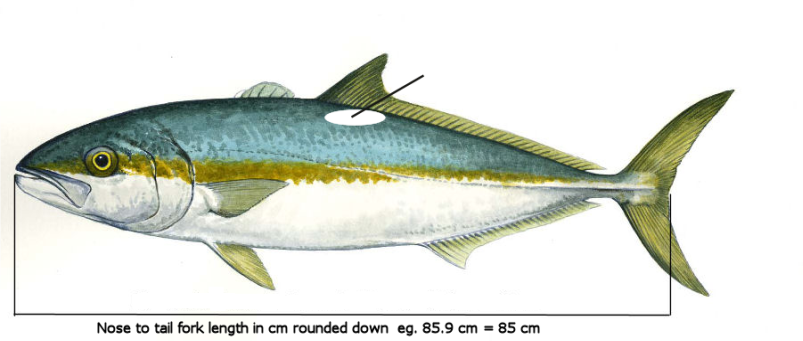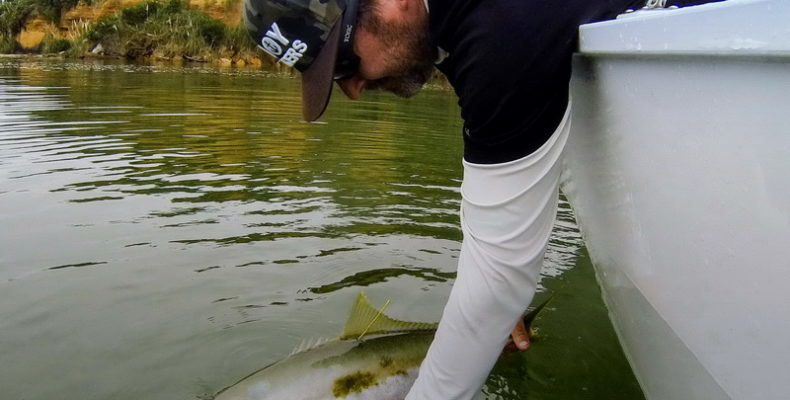The Programme
This gamefish tagging programme is a cooperative project between the Ministry for Primary Industries, the New Zealand Sport Fishing Council, its affiliated clubs and anglers, commercial fishers and the current fisheries research provider who is Blue Water Marine Research Ltd.
There have been over 24,000 kingfish tagged and released in New Zealand since the programme started in 1975. Most of these have been released in east Northland and the Bay of Plenty in the last 20 years with tags also used on billfish and sharks. There have been 1,630 recaptures reported, a recapture rate of 7 %.
Cooperative tagging programmes provide information on the size and distribution of fish released by recreational fishers. Recaptures provide information on distance and direction of movement, time at liberty, and in some circumstances growth rates of the fish involved.
Where to get tags
- Gamefish tags are available for purchase from your local sport fishing club or the NZ Sport Fishing Council.
- Tag applicator tips are available from some sports shops or on line.
Which fish to tag
- Only kingfish over the legal size of 75 cm should be tagged with the gamefish tags but would like to see some fish across the whole size range of kingfish tagged.
- A pilot project is underway using smaller plastic barbed tags for kingfish, over 50 cm.
- The best fish to tag are ones that are hooked in mouth or lip, where you can remove the hook.
Tagging procedure
- Check the number on the tag and the card are the same.
- Place the tag in the slot of the applicator and use rubber band around the handle to hold the tag in place.
- To get the best information form tagging please measure kingfish on a measuring board (nose to fork of the tail) and recording this on the tag card.
- The tag should be placed tag high on the back about half way along and angled back at 45o so that it will stream with the flow of water when swimming (see diagram).
- Tags that protrude from the side of the fish get badly abraded. A gentle pull on the tag will help the tag head to lock in place.
- These tags hold best when inserted about 40 mm and with the stainless steel dart pointing slightly forward.
- Keep the tag applicator clean to prevent infection in the tag wound.
Releasing your fish
- Estimate the weight of your kingfish and take photos if you like.
- It is best to remove the hook but if this is difficult it is less stressful for fish and crew to cut the trace close to the hook and note this on the tag card.
- Record the date, location (Lat and Long is useful), and other details on the tag report card.
- Fill the tag card out immediately after the fish has been released. Don’t leave it till later.
You must return your tag card
It is vital that the tag report card is handed into your fishing club or posted to:
Gamefish Tagging Fisheries New Zealand PO Box 53030 Auckland 2150
- There is nothing more frustrating than getting a really interesting recapture of a tag that has obviously been out for a while and not having the tag card because someone didn’t bother to hand it in. We all miss out gathering important information and you miss out on hearing about your fish. Please don’t forget.
- You will be notified by post if your fish gets recaptured and receive a printed New Zealand GameTag T-shirt.
Lets make this a success. Do it well and help provide a glimpse into the lives of these wonderful fish.

Figure 1: Length of kingfish nose to tail fork in cm rounded down and tagging location.
